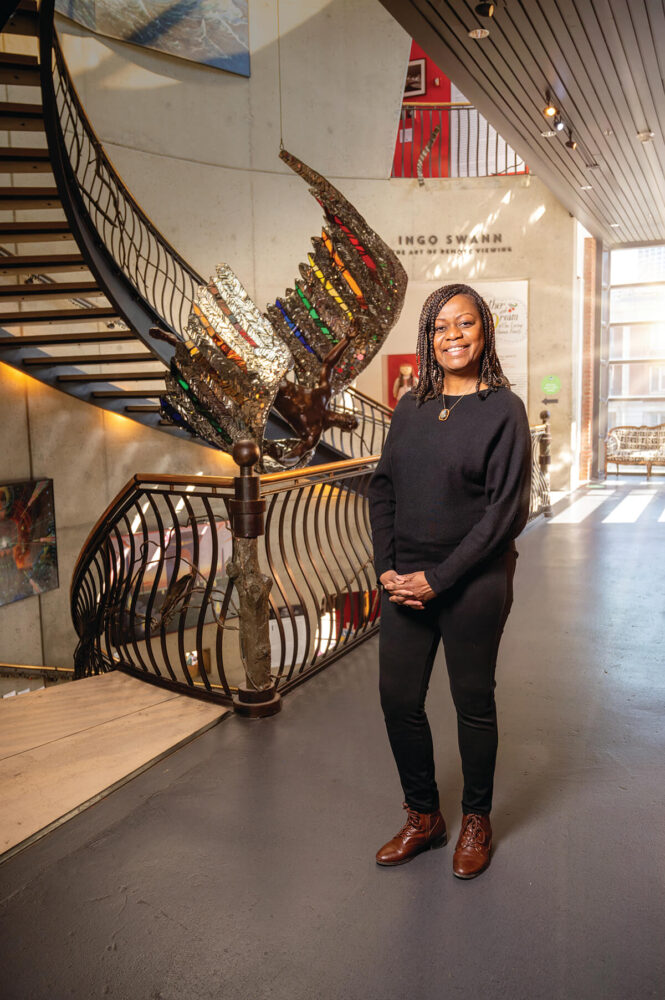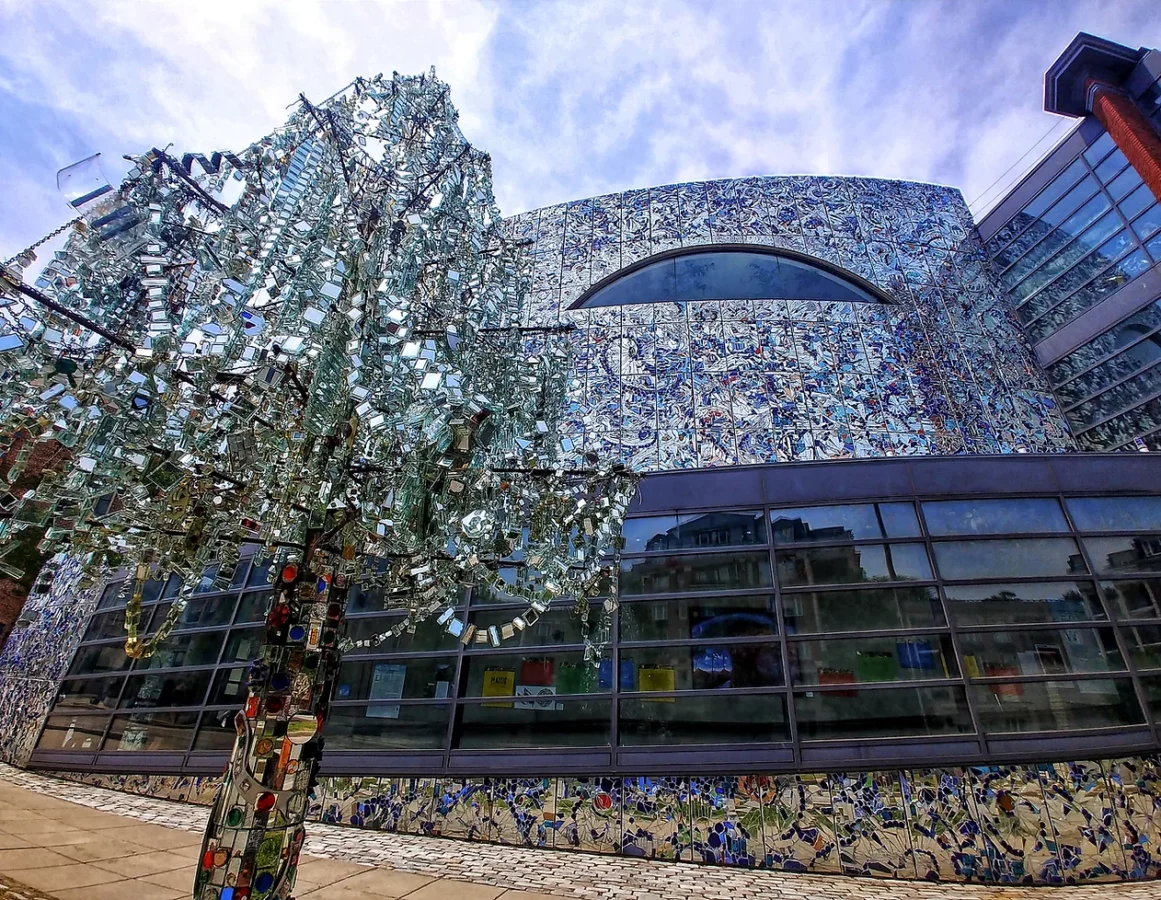In March, 2022, Whitfield said she was “beyond thrilled to become part of the AVAM family,” in a statement. “What excites me most is that AVAM’s philosophy and visual aesthetics are beautifully aligned with what it means to be human and what we should strive for as a human race. Rebecca has done an extraordinary job of embracing, advancing and providing a place for the intuitive creative spirit to flourish and grow. I look forward to building upon her strong foundation by increasing AVAM’s visibility, building greater alliances and taking AVAM to its next level.”
In subsequent conversations with Whitfield, her vision has stayed consistent with those expressed in public: one of building upon AVAM’s strengths but expanding diversity in audience, building new partnerships, creating updated structures for accountability, and fundraising that better supports museum staff and audiences. Given that Whitfield’s goals were not a secret, nor were they in opposition to those stated by AVAM at the time of her hire, and that she was effectively working towards those goals, it appears that one of two things happened to derail Whitfield’s leadership.
One possibility is that her stated goals—diversity, equity, and inclusion—were not actually shared by the institution at the time of her hire. Or the other possibility is that AVAM’s staff and board did not fully comprehend what these goals would actually require to accomplish and found itself unwilling to make those sacrifices and changes at this time.
Two months after Whitfield’s “departure” from AVAM, she spoke to Helen Bezuneh at The Afro Newspaper. According to Bezuneh, Whitfield still does not know what motivated her former employer to remove her as its director.
On September 19, 2023, Whitfield says AVAM’s board informed her that they were “going in different directions.” It was a shock to her, and to the larger Baltimore arts community, where she was making inroads and building relationships—including being named to the Mayor’s Committee on Art and Culture that very week.
Goelet, chair of AVAM’s board, released a vague statement on September 21, 2023: “After an extensive review of issues essential to the strategic growth of AVAM, the Board of Directors decided to part ways with Jenenne Whitfield as director… While deeply unfortunate, the Board nonetheless appreciates Ms. Whitfield’s contributions over the past year and wishes her well in her future endeavors.”
In a Sept 21, 2023 Baltimore Fishbowl article, Hoffberger said that she planned to “return temporarily to serve as artistic director, curating exhibits and developing AVAM’s endowment.”
After all that confidence and praise for Whitfield just a year earlier, Hoffberger told the Fishbowl, “We all wish it had ended differently but every support really was given and it was just not a great fit.” And then she said something that I found even more shocking: “If I die tonight, my staff is so capable that everything that people love about AVAM would be preserved.”
First of all, we have a founding director stepping back into a previous role, which by all accounts is a step backwards, since she voluntarily chose to retire a year earlier. Second, describing them as “her staff” appears to be a boundary breach. Last, using the word “preserved,” as if AVAM had been under attack or needed to be saved is problematic. Not only does it indicate that Whitfield was not given a fair chance at unfettered leadership or enough time to accomplish shared goals, it suggests that her publicly stated aims as an agent of change were perceived as a threat.
“My role was obviously to lead the next chapter of the museum, so that’s what I did,” Whitfield said to the Afro Newspaper in November, 2023. “I did the kind of work that would really require a person to be on the ground and getting to know the community where the museum is functioning and operating. By me being new to Baltimore, I definitely had to hit the ground running. I began building relationships and looking at ways in which I could make my footprint in the museum and define what the new leadership would look like for AVAM.”
Clearly, Whitfield was selected and hired by AVAM to be a change agent. She was hand-picked for her ability to engage with audiences, build relationships with funders, and to reinvigorate an outdated model.
How much time should be given to such a leadership position, to enact any kind of meaningful change? How much time should be given to a cultural leader, nationally recruited and new to Baltimore, to understand AVAM’s place within the ecosystem, in order to assess what audiences and partners in the region desire from the institution?
Like so many of BmoreArt’s readers, I carry a great love for AVAM, but also a lot of constructive criticism that I have mostly kept to myself over the years because no one appreciates unsolicited feedback. AVAM is unequivocally a special place, but it has become clear that the institution was not prepared to work within a new leadership model and did not create the space or structures to successfully do so.
As a founder of an arts organization myself, I understand the amount of labor, love, grit, and commitment that one must hold in creating and maintaining an organization. I admire Hoffberger’s creation of an iconic, beloved, and successful cultural institution—especially in Baltimore, which is damn near impossible.
However, the strategies necessary to build a new organization from scratch are completely different from the accountability structures required for longer term sustainability. If an institution cannot successfully function without the direct engagement of its founding director, clearly it is not yet sustainable or ready to successfully onboard a successor.
When a leader is publicly dismissed after just a year, this is not a sign that the individual has failed the institution. Rather, it is a red flag that the institution has failed the individual leader, as well as larger communities in the region who were eager to collaborate and grow together. Quite frankly, the hasty departure of Whitfield is a glaring misstep and sets a dangerous precedent for the future.
In a public release statement from October 23, Whitfield affirmed her commitment to Baltimore as a part of a “stellar arts community,” and despite her tenure at AVAM being cut short, said she has decided to continue her larger mission here.
“As we press on toward the long-overdue vision of inclusivity and a fairer society, it’s our collective responsibility to confront and challenge the fears obstructing progress,” wrote Whitfield. “What questions should we be asking? How can we unite at the table, ready to stake it all for real change to take root? As women of color, our mental and physical well-being teeters on the edge as we strive to walk in shoes filled with glass.”
“Baltimore is currently imbued with a captivating atmosphere,” she continued. “Despite the challenges and skeptics, it seems as if this city was chosen to achieve something remarkable… The moment is ripe for us to embrace genuine change with compassion, trust, and the optimism that our humanity is not irretrievably lost. What other options do we have?”








